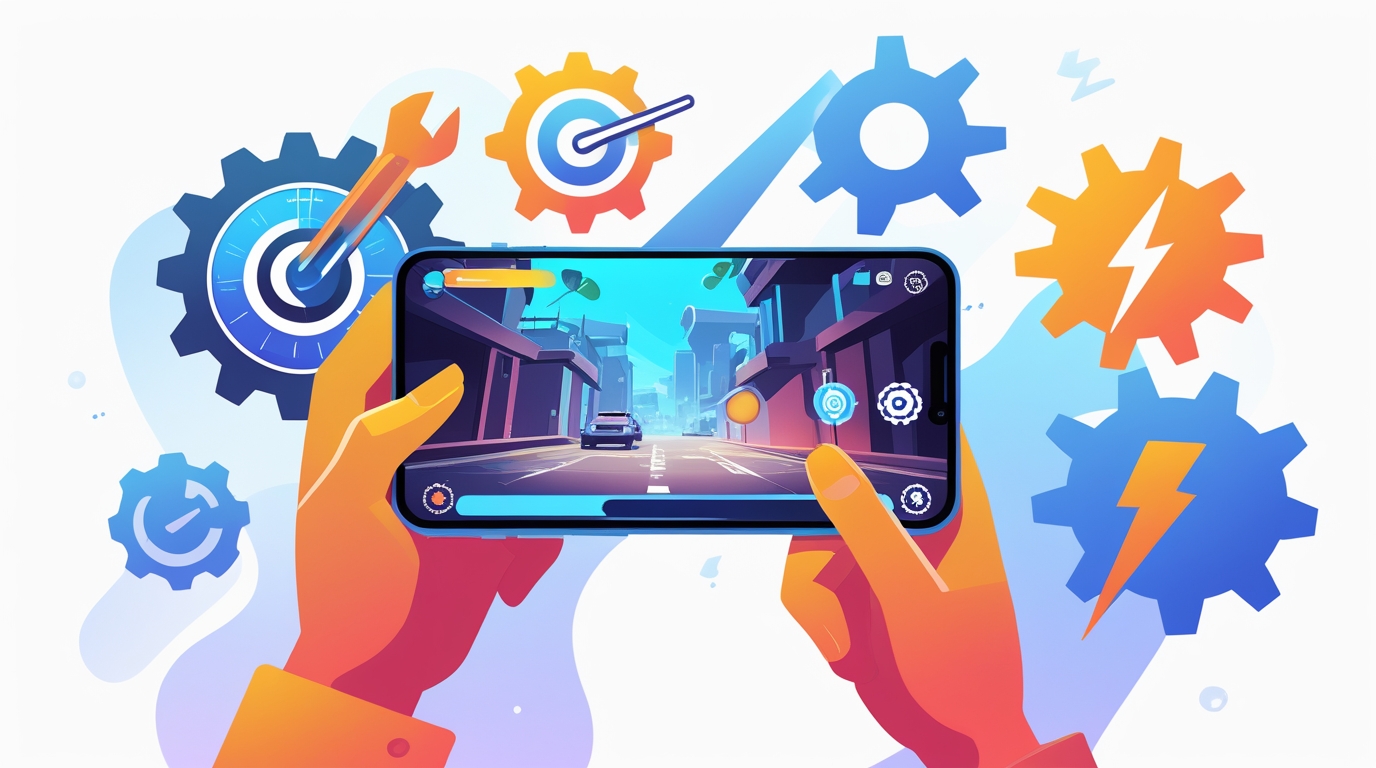
As far as mobile gaming is concerned, performance is paramount. Even the most visually appealing and fascinating game may lose players if it freezes, overheats, or drains the battery too quickly. Mobile hardware varies greatly by device and region, from high-end smartphones to models with low RAM. So optimizing a game is a non-trivial task for developers who need to ensure a smooth gameplay experience for everyone.
As seasoned Melior Games mobile game developers, we have observed similar performance issues in numerous projects. The top 12 mobile performance problems are listed here, along with workable solutions.
✅ 1. Low FPS (frame rate drop)
Why this happens: Heavy graphics, too many objects on the screen, or poorly optimized code.
How to avoid this:
- Instead of constantly creating and deleting objects, use an object pool.
- Reduce unnecessary transparency and traffic.
- Limit the amount of real-time lighting and complex shaders.
🔥 2. Device overheating
Why this happens: The CPU and GPU have been running at maximum power for a long time.
How to avoid this:
- Limit the frame rate on weaker devices (e.g., 30 FPS option).
- Minimize pointless updates and background processing.
- Adjust the quality settings according to the performance of your device.
🧠 3. High Memory (RAM) Usage
Why it happens: Improper memory release or loading an excessive number of assets simultaneously.
How to avoid it:
- Employ streaming assets or gradually load scenes and levels.
- Compress textures and optimize audio formats.
- Assets should be unloaded when not in use, especially in Unity ( Resources.UnloadUnusedAssets() ).
🐢 4. Long loading times
Why this happens: Slow server response, large files, or unoptimized resources.
How to avoid this:
- Large scenes can be split and loaded asynchronously.
- Compress resources and remove unnecessary files.
- Preload only the most important data; the rest should be loaded lazily.
🎮 5. Input lag and slow control
Why this happens: Extreme UI processing or an excessive number of physics computations during update cycles.
How to avoid this:
- Simplify UI animations and avoid excessive layout rework.
- Move physics to FixedUpdate, logic to Update, and visuals to LateUpdate.
- Eliminate touch input jumps to prevent UI overload.
🌐 6. Poor network performance
Why this happens: Large data transfers, erratic connections, and a lack of backup synchronization logic.
How to avoid this:
- Use prediction and interpolation in multiplayer games.
- Data packets should be compressed, and only delta updates should be sent.
- Ensure proper reconnect and offline backup.
🔋 7. Rapid battery drain
Why this happens: Heavy background tasks and high GPU/CPU usage.
How to avoid this:
- Optimize shaders; avoid frequent draw calls.
- Reduce refresh rate for non-critical systems.
- Offer a “Battery Saver Mode” with reduced visual effects.
🧩 8. Too many drawing calls
Why this happens: There are far too many distinct objects rendered separately.
How to avoid this:
- Use sprite atlases and texture packing.
- Enable batching (static and dynamic).
- Reduce the variety of materials on objects.
🧱 9. Unoptimized physics
Why this happens: Real-time physics on too many objects.
How to avoid this:
- Use simpler colliders, a box or a capsule, instead of a mesh.
- Reduce the number of collisions and rigid body checks.
- Turn off physics modeling for off-screen objects.
🎭 10. Heavy and Unoptimized UI
Why it happens: Multiple canvases are updating constantly, or large UI images.
How to avoid it:
- Reduce the number of canvases; avoid frequent rebuilds.
- Optimize UI texture sizes and use sprite sheets.
- Disable off-screen UI elements.
🧪 11. Poor performance on low-end devices
Why this happens: A generic construction with high requirements.
How to avoid this:
- Implement device-based quality levels (automatic specification detection).
- Use LOD (Level of Detail) for models and textures.
- Offer graphical settings that players can customize.
🏗️ 12. APK/IPA file size is too large
Why this happens: Unused libraries, duplicate code, or uncompressed files.
How to avoid this:
- Remove all unnecessary resources.
- Make use of improved audio and texture compression formats.
- Split APK by architecture (ARMv7, ARM64) to reduce size.
🚀 Summary: Performance is the key to success on mobile devices
Players won’t tolerate slow or unresponsive games due to fierce competition in app stores. Flawless optimization guarantees better reviews, increased revenue, and increased user retention.
Want to create a high-performance mobile game?
At Melior Games, we specialize in developing optimized, scalable, and player-centric mobile games.
Our team guarantees maximum performance without sacrificing visual design or gameplay quality. So contact us if you want to update your game or create a successful new project.
➡️ Let’s turn your idea into a smooth and successful mobile game that everyone loves to play!




